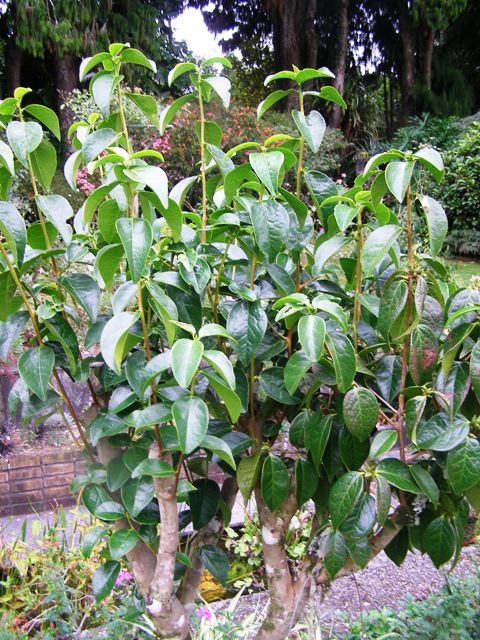
1) Camellia sasanqua “Sparkling Burgundy” has had quite a bit of work done on it over the years to thin the branch structure and to lift the lower levels to allow light below. This has made a feature of the size and age of the plant which is now more of a small tree than a shrub.

2) However, this camellia has little in its favour. The top layers of foliage are not in good health and look scruffy and full of dead wood. We will rejuvenate it by cutting it back very hard to bare wood. This is best done any time from through winter until early spring.

3) The plant is virused which affects its vigour. Virus in camellias is not always bad. It is what gives variegated leaves and two tone flowers. However, if you then use the cutting tools on a healthy camellia, you will transfer the virus. It pays to disinfect saws and secateurs immediately after finishing the affected plant. You can do this by simply dipping in a bucket containing diluted bleach.


4) Cut back to whatever level you wish. Most camellias will resprout and come again even when cut off at ground level, but we want a bushy shrub about 1.5 metres high by summer so we are leaving bare woody stems around that height, cut a little lower at the sides than the centre. If you leave some of the old trunks, you keep a strong structure and shape for the bush. If you cut off at the ground, you will be starting over with a carpet of fresh shoots which may not give a good long term shape.

5) This Camellia yuhsienensis was cut back early last spring to completely bare stems with not a single leaf remaining. Such ruthless cutting forced dormant leaf buds into life and it is now a bushy little shrub although we won’t get as many flowers as usual for another year.








